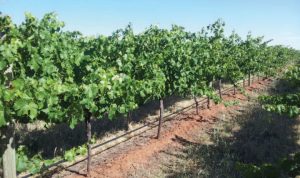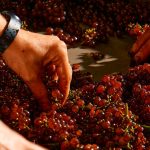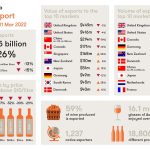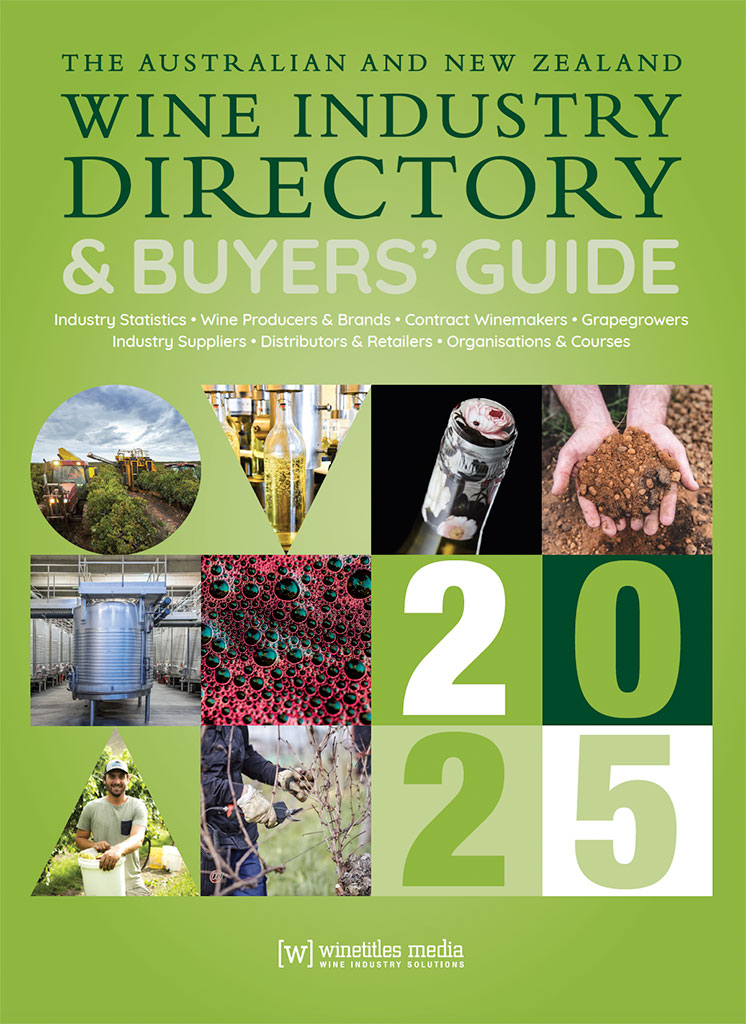By Kevin Olssen, Olssens of Watervale, Clare Valley, South Australia
First published in the January/February 2012 issue of the Wine & Viticulture Journal

Carmenère was planted at Bass Hill Vineyard, the Olssen family’s new vineyard in the southern part of the Clare Valley, in 2002. Planting of the 0.8 hectare block was completed in 2003.
The Bass Hill Vineyard project started in 1998 with the acquisition and planting of land north-west of Auburn. The land is in close proximity to other vineyards of significant pedigree and has proved its potential for the production of high quality winegrapes.
The second stage of vineyard development of approximately 6.3ha coincided with the planting of Carmenère in 2002. The whole vineyard now measures 27.3ha and includes nine red winegrape varieties and Riesling.
Prior to planting Carmenère, we already had five of the six Bordeaux red grape varieties (Cabernet Sauvignon, Cabernet Franc, Merlot, Malbec and Petit Verdot) growing at Bass Hill and early signs were promising. The first vintage of Cabernet Sauvignon in 2002 was of high quality, and was viewed positively by the winery that bought the fruit. In 2003, a blend of the five varieties was made at Knappstein Wines. All five varieties were co-fermented, mainly because of the small quantities of each of them. This blend ended up in the 2003 Knappstein Cabernet Merlot. Despite the blend being made from mostly first-crop fruit, its high quality at the time of classification in June 2004 was surprising.
A desire to grow all six of the traditional Bordeaux red grape varieties led us to source the ‘lost sixth’ variety, Carmenère. This enabled us to explore the possibilities of making a six-variety blend, and also to have Carmenère as a single varietal wine. Being the first Australian producer to release a Carmenère has provided Olssens of Watervale with a point of difference, an important characteristic for small wine producers.
Planting material was purchased through South Australian Vine Improvement Inc. (SAVII) following an approach made through Wayne Farquhar (SAVII executive officer) in 2001. At the time, there were just two Carmenère vines in one of the Government nurseries in the Barossa Valley and the planting material for Bass Hill Vineyards came from these. We chose to establish the block of Carmenère as a Clare Valley Vine Improvement Society Source Block, so Carmenère cuttings would be available to other Australian grapegrowers.
The small vines came to us in pots. In the first year, they made little headway but, in the second year, good growth was achieved. It was not possible for SAVII to provide all of the required material in the first year, so approximately 0.3ha was planted in 2003.
Our Carmenère is planted in north-south oriented rows, 3m apart with 1.83m between vines on a single cordon wire. Irrigation is via mains water, delivered through 2L/hour drippers, one per vine.
Watering has never been more than 0.4ML/season. The soil is mainly red clay-loam over calcareous material, with top-soil approximately 25-30cm deep.
The southern end of the block is slightly more exposed with the soil changing to shallower, red clay-loam over slate and shale. The block is approximately 370m above level.
Fruitfulness diminished after the first two vintages, so we changed from spur pruning, to rod and spur pruning, with no more than two rods per vine. This was an attempt to simulate cane pruning without having the burden of re-starting the training process and having to sacrifice the crop for a couple of years.
Rod and spur pruning has resulted in a better yield, except for the more exposed vines on slate or shale. They have always been less fruitful than the rest and have experienced setting problems.
Two moveable catch wires were installed and used to lift the canopy during the middle part of the growing season. We were doing this consistently across all varieties but, more recently, we have changed to a range of approaches in different parts of the vineyard. With Carmenère, we now use the western wire as a ‘permanent’ wire to which the rods are attached during pruning, while the other is used as a wire to lift the canopy and provide light on the eastern side.
During the more difficult, drier years (e.g., 2007) Carmenère canopy development was still reasonable and the vines coped well with the heat.
Berries retained their form, and flavour ripeness occurred at 13.0-13.5°Baumé. Typically, berries are reasonably large with quite thick skins. Bunch weights are around 120-140g. Close to picking time, Carmenère berries are a little reminiscent of blueberries, both in appearance and flavour.
Carmenère is predictably late to ripen, but at Bass Hill, it has always been picked before Petit Verdot. Picking times (and yields) for the last four vintages (not including 2011 when the fruit was not picked due to botrytis infection) were:
- 7 March 2007 (1.35t/ha)
- 7 March 2008 (1.95t/ha)
- 21 April 2009 (8.4t/ha)
- 22 March 2010 (4.45t/ha)
Given the short time that we have been growing Carmenère, it is difficult to draw too many conclusions. The lack of uniformity of the vintages over that period has further diminished the potential to state too much. However, it is our opinion that Carmenère is a robust, viable variety to grow. It reaches ripeness at low Baumé, leading to balanced wines with good structure, excellent colour and depth of flavour.
The Olssen Carmenère wines and the blends that include Carmenère have been well-received and reviewed positively. There has been a lot of interest from the public in this variety. Olssens of Watervale has released only two vintages of Bass Hill Vineyard Carmenère, with the 2006 vintage gaining a blue gold medal at the Sydney International Wine Competition in 2009, and the 2009 vintage awarded 94 points in the 2011 Australian Wine Companion, by James Halliday. The Olssen Bass Hill Vineyard Carmenère wines have great depth of colour, a dried herb characteristic that I have not seen in other varieties, berries and a hint of coffee beans. Occasionally, in individual barrels, this has even looked more like espresso coffee. Fine tannins give the wine a soft, textural mouthfeel.
Two vintages of The Olssen Six (a blend of all six of the Bordeaux red grape varieties) have been released. The 2005 was awarded a double gold medal at the San Francisco International Wine Competition, and the 2006 was the equal highest pointed wine in the Cabernet and Family section in the 2009 edition of the Australian Wine Companion. Nearly all of the fruit for these wines came from Bass Hill Vineyard with a small quantity of Cabernet Sauvignon included from the home block at Watervale. In addition, three vintages of Olssen Second Six have been released, all of which have received positive reviews, including a gold medal at the San Francisco International Wine Competition in 2009 for the 2005 vintage, and a silver medal for the 2006 at The International Wine Challenge.
Carmenere

By Peter Dry, Emeritus Fellow, The Australian Wine Research Institute
Background
Carmenere (kah-men-air) was known in the Medoc area in the 18th century, often associated with Cabernet Franc. This is not surprising given that we now know that Cabernet Franc is actually one of the parents of Carmenere. It was gradually replaced by other Bordeaux varieties during the replanting that followed the phylloxera invasion in the late 19th century —reportedly because it has irregular yields, late ripening and ‘green’ wine character. In 2006 there were only 15 ha recorded for the whole of France. Globally there were 11360 ha in 2010 (up 100% from 2000), 78% in Chile. It is now best known in Chile, where it was originally thought to be Merlot—it was not until 1994 that the mistaken identity was confirmed by French ampelographer Jean-Michel Boursiquot. Curiously, under current Chilean legislation, it is acceptable to label Carmenere wine as ‘Merlot’. There has also been some confusion in northern Italy, with a large area of Cabernet Franc identified as Carmenere in 1991. Carmenere has many synonyms including Caberne Karmener, Cabernella , Cabernet Carmenere, Cabernet Cosmo , Cabernet Grande , Cabernet Grosso, Cabernet Italico, Grande Vidure, Kaberne Karmener and Kabernel. There are small areas in both Washington (USA) and New Zealand. In Australia there are currently at least 11 wine producers, mainly in Vic. and SA (6 ha).
Viticulture
Carmenere ripens two to three weeks later than Merlot. Berries are medium and bunches are small and usually well filled to compact; however, because it is prone to poor fruitset, like Merlot, bunches can be loose. The variety is reported to have gone out of favour in Bordeaux due to its ‘shy’ bearing; but in both Chile and Italy, yield is generally good and may require restriction to avoid problems with ripening and quality. Growth habit is erect. Cane pruning is recommended in Italy and France because basal bud fertility is only moderate; however, spur pruning and cordon training are successfully used in both Chile and Australia. It is susceptible to powdery mildew and Botrytis, less so to downy mildew. In Italy, it is said to be susceptible to K deficiency, bunchstem necrosis and drought. Six clones are available in Italy with variation in Botrytis susceptibility and yield.
Wine
Carmenere wines are medium to full bodied, with good colour and spicy, plum, berry and pepper notes. It may be used alone or in a blend, often with Cabernet Sauvignon. It can have higher methoxypyrazine levels than Cabernet Sauvignon and wines may be excessively vegetative if fruit does not reach adequate maturity. The best wines from Chile come from the warm Maipo and Colchagua regions where it can get fully ripe and wines may be cherry-like, with smoky, spicy and earthy notes.
















